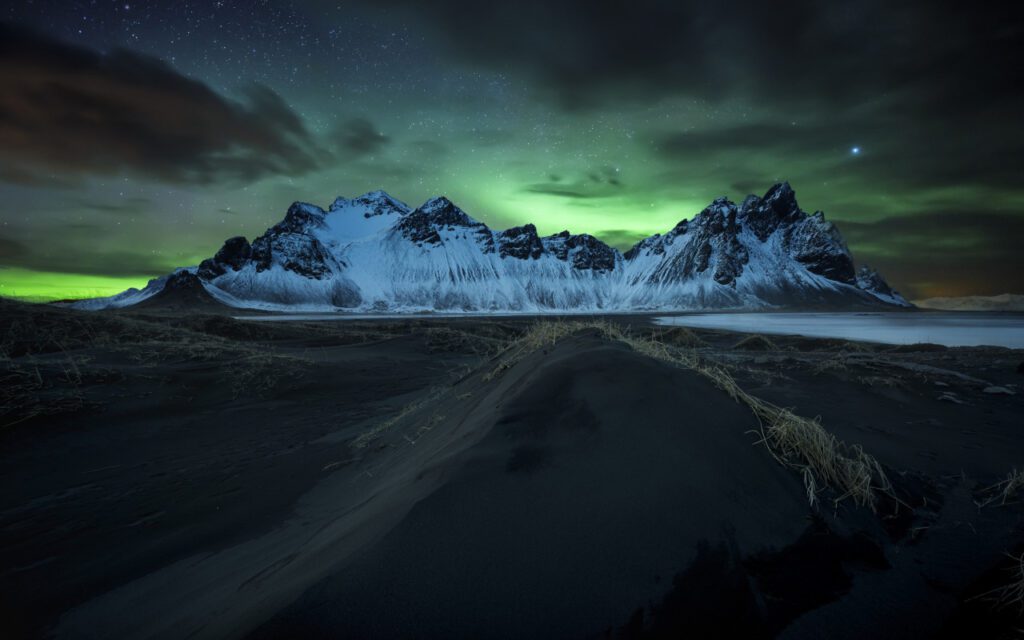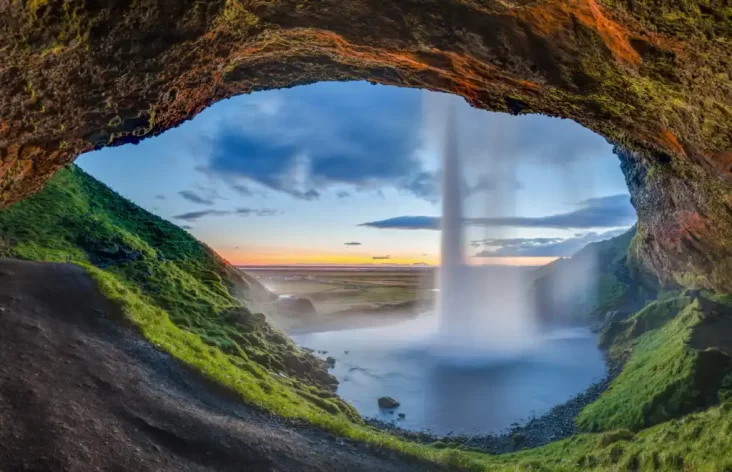Iceland, with its otherworldly landscapes of cascading waterfalls, bubbling geothermal pools, and dramatic glaciers, has captured the imagination of travelers worldwide. But before you embark on your journey to this Nordic island nation, you should know several crucial things to ensure your trip is as magical as the landscapes you’ll encounter. From unpredictable weather patterns to unique cultural norms, being prepared will transform your Icelandic adventure from good to unforgettable.
Whether you’re planning to chase the Northern Lights, soak in geothermal hot springs, or explore the rugged terrain of this volcanic island, these essential tips for first-time visitors will help you navigate Iceland like a seasoned traveler. Let’s dive into the ten things you absolutely must know before visiting Iceland. What I Wish I Knew Before Visiting Iceland

1. Weather Can Be Unpredictable (and How to Prepare)
Iceland’s weather isn’t just unpredictable—it’s famously changeable, often cycling through multiple seasons in a single day. You might experience sunshine, rain, wind, and snow all within a few hours, regardless of when you visit.
The local saying, “If you don’t like the weather in Iceland, just wait five minutes,” holds true year-round. Summer months (June-August) offer milder temperatures ranging from 10-15°C (50-59°F) with nearly 24 hours of daylight, while winter brings shorter days, potential snowstorms, and temperatures hovering around freezing.
To prepare:
- Pack layers that can be added or removed quickly
- Always carry a waterproof and windproof outer layer
- Invest in quality hiking boots with good traction
- Bring gloves, hats, and scarves even in summer
- Check Vedur.is (Iceland’s meteorological office) daily for accurate forecasts
Remember that wind in Iceland is often more challenging than rain or cold temperatures—windproof gear is non-negotiable!
2. It’s More Expensive Than You Think (Budgeting Tips)
Iceland consistently ranks among the most expensive countries in Europe, catching many first-time visitors off guard. A simple meal at a casual restaurant can cost 3,000-4,500 ISK ($22-33), while a pint of beer might set you back 1,200-1,500 ISK ($9-11).
Accommodation costs vary seasonally but expect to pay at least 15,000-25,000 ISK ($110-185) per night for a decent hotel room. Rental cars, a virtual necessity for exploring beyond Reykjavík, typically start at 10,000 ISK ($74) per day for a basic vehicle—considerably more for 4x4s.
Budget-friendly alternatives include:
- Shopping at budget supermarkets like Bónus and Krónan
- Booking accommodations with kitchen facilities to prepare some meals
- Taking advantage of happy hours at bars and restaurants
- Filling your water bottle from the tap instead of buying bottled water
- Planning some free activities like hiking, visiting public beaches, and exploring Reykjavík on foot
Preparing a realistic budget before your trip will help avoid financial surprises and allow you to splurge on truly memorable experiences.
3. Book Accommodation and Tours in Advance (Especially in Peak Season)
Despite its remote location and harsh climate, Iceland has experienced a tourism boom in recent years. During summer months (June-August) and the Northern Lights season (September-March), accommodation and popular tours can book out months in advance.
This is particularly true for areas along the South Coast and around the Golden Circle, Iceland’s most popular regions. Last-minute travelers often find themselves either paying premium rates or staying in less convenient locations.
Priority bookings should include:
- Accommodation (especially in Reykjavík and small towns with limited options)
- Blue Lagoon visits (specific time slots sell out quickly)
- Northern Lights tours during winter
- Ice cave tours (only available in winter and strictly limited)
- Popular hiking trails like Laugavegur that require hut reservations
For the best combination of availability and pricing, book accommodations 4-6 months in advance and tours at least 2-3 months before your trip.
4. Renting a Car is Highly Recommended (and Driving Conditions)
While Iceland has public transportation, a rental car provides unmatched freedom to explore at your own pace and visit off-the-beaten-path locations. The Ring Road (Route 1) circles the entire island and connects most major attractions, but driving conditions can challenge inexperienced drivers.
Before hitting the road:
- Consider a 4×4 vehicle if you plan to explore Highland F-roads (only open in summer) or if visiting in winter
- Familiarize yourself with one-lane bridges (yield to oncoming traffic if they reached the bridge first)
- Download offline maps and the 112 Iceland emergency app
- Check road conditions daily at road.is before starting your journey
- Never stop suddenly on roadways for photos—use designated pull-offs
- Understand that off-road driving is strictly prohibited and heavily fined
Icelandic weather can transform well-maintained roads into hazardous conditions quickly, particularly in winter when daylight is limited to a few hours. Always allow extra time to reach destinations and be prepared to adjust plans based on conditions.
5. Respect the Nature (Leave No Trace Principles)
Iceland’s delicate natural environment is its greatest treasure, but increasing tourism has put pressure on its pristine landscapes. What might seem like harmless behavior—stepping off a marked trail or picking wildflowers—can cause lasting damage to fragile ecosystems that take decades to recover in Iceland’s harsh climate.
Essential nature ethics include:
- Stay strictly on marked paths and trails
- Never drive off-road (this can damage delicate moss that takes centuries to grow)
- Pack out all trash, including biodegradable items
- Respect closures and barriers—they exist for your safety and environmental protection
- Avoid disturbing wildlife, particularly nesting birds
- Use designated campsites only if camping
Iceland’s environmental fines are substantial, but the real cost is to landscapes that future generations may never experience in their unspoiled state if visitors don’t tread lightly.
6. The Northern Lights Are Not Guaranteed (but Worth the Chase)
The aurora borealis tops many Iceland bucket lists, but this natural phenomenon requires specific conditions: dark skies, clear weather, and solar activity. Winter months (September through April) offer the best chances, but even during peak season, sightings are never guaranteed.
To maximize your chances:
- Plan at least 5-7 nights in Iceland during aurora season
- Check aurora forecasts on the Vedur.is website, which rates activity on a scale of 0-9
- Seek locations away from city lights—light pollution significantly reduces visibility
- Be prepared to stay up late, as peak viewing is often between 11 PM and 2 AM
- Book accommodations with aurora wake-up calls or tours with guides who track conditions
Even if the Northern Lights prove elusive, the experience of standing under Iceland’s star-filled winter sky is magical in itself.
7. Tap Water is Safe (and Delicious)
Iceland boasts some of the purest water in the world, flowing from glaciers through volcanic rock that naturally filters impurities. Not only is the tap water safe to drink, but it’s also notably delicious—free from the chemical treatments common in other countries.
Purchasing bottled water in Iceland isn’t just unnecessary; it’s considered somewhat ridiculous by locals. Instead:
- Bring a reusable water bottle to refill throughout your journey
- If staying in accommodations with a refrigerator, fill bottles before excursions
- Enjoy the hot water too—though it might smell slightly of sulfur due to its geothermal origin, it’s perfectly safe for bathing
By drinking tap water, you’ll save money while reducing plastic waste—a win for both your budget and Iceland’s environment.
8. Credit Cards Are Widely Accepted (but Have Some Cash Handy)
Iceland functions as a nearly cashless society, with credit and debit cards accepted virtually everywhere—from upscale restaurants to remote gas stations. Even small purchases like coffee or parking can typically be paid for electronically.
However, keeping a small amount of Icelandic króna (ISK) is still advisable for:
- Rural public toilets that sometimes require coins
- Small vendors at local markets
- Emergency situations or power outages
- Tips, though not obligatory in Iceland
Most ATMs dispense króna, and currency exchange is available at Keflavík International Airport. A good rule of thumb is to have 10,000-15,000 ISK (roughly $75-110) in cash for contingencies.
9. Learn a Few Basic Icelandic Phrases (It’s Appreciated)
While most Icelanders speak excellent English, learning a few basic phrases shows respect for the local culture and often results in warmer interactions. Icelandic is notoriously difficult to pronounce, but locals genuinely appreciate the effort.
Essential phrases include:
- “Góðan daginn” (GOH-than DAY-in) — Good day
- “Takk” or “Takk fyrir” (TAHK FEE-rir) — Thank you
- “Já” (YOW) — Yes
- “Nei” (NAY) — No
- “Skál” (SKAAL) — Cheers
Using these simple greetings and expressions of gratitude can transform routine interactions into memorable cultural exchanges that enrich your Icelandic experience.
10. Be Prepared for Geothermal Smells (It’s Part of the Experience)
That distinctive “rotten egg” smell you’ll encounter throughout Iceland? It’s hydrogen sulfide, a natural byproduct of geothermal activity that powers much of the country. The smell is particularly noticeable in hot water from taps and around geothermal areas like hot springs and geysers.
While initially jarring, most visitors quickly adjust to the sulfurous scent. Remember:
- The smell is stronger in hot water than cold
- It’s completely harmless despite the unpleasant odor
- Showering in hot water with this smell is actually beneficial for your skin
- The smell won’t transfer to your clothing or hair
Consider it part of Iceland’s unique sensory experience—a small price to pay for bathing in naturally heated water and witnessing the earth’s geothermal power up close.
Your Iceland Adventure Awaits
Armed with these ten essential insights, you’re now better prepared for an unforgettable Icelandic adventure. From navigating unpredictable weather to respecting the delicate natural environment, these tips will help you experience the best this remarkable island has to offer while avoiding common pitfalls.
Remember that Iceland’s true magic lies not just in its iconic attractions but in the unexpected moments—a sudden rainbow over a waterfall, a midnight sun illuminating a black sand beach, or a spontaneous conversation with a local sharing ancient sagas. Come prepared, but leave room for serendipity.
What Iceland tips would you add to this list? Share your experiences in the comments below, and start planning your dream Iceland trip today!


